STUDENTS PROJECTS
PROJECTS2013
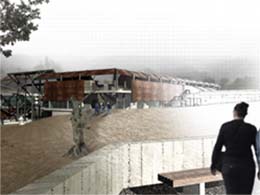
24 February, 2015
Art multiplex in the Customs Office area in Palaia, Volos
The purpose of the study is the creation of a multifunctional art building.
Student: Vairami Aikaterini
Supervisor: Gavrilou Evelyn
University of Thessaly
Presentation Date: March 2014
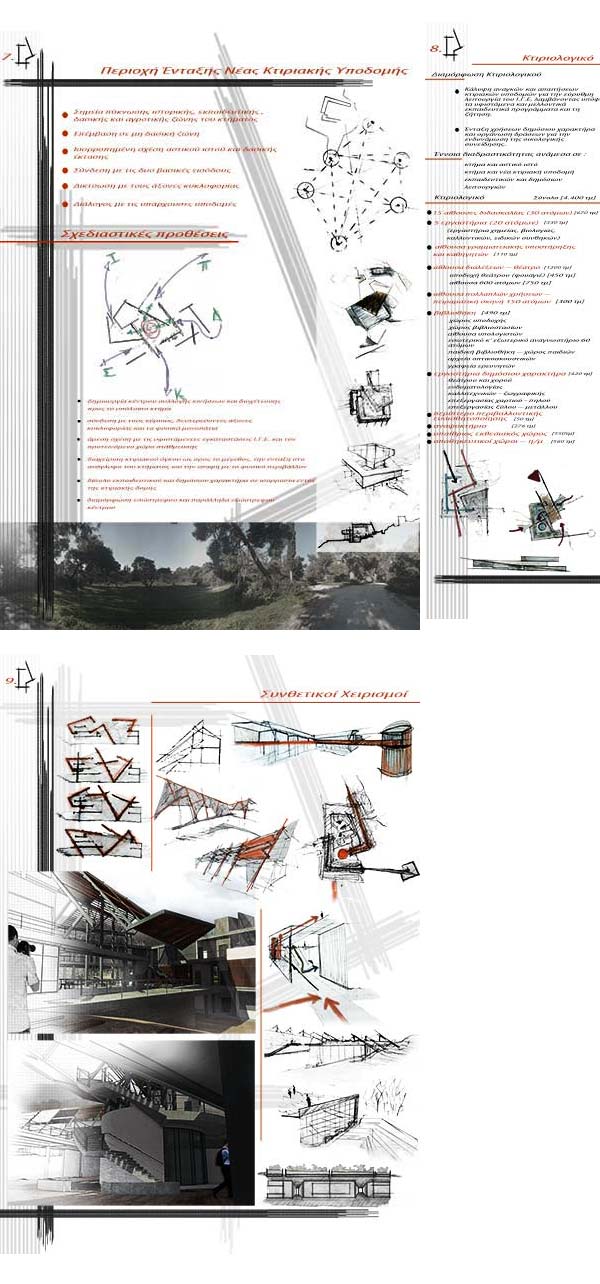
The search of the thesis topic started from the fact that "art is everywhere, there should be no limitations", such as lack of infrastructures required. Through a survey on the current situation in Volos, we have a codification of a constructions system by various techniques and therefore a multiplex is created, which gathers a variety of uses concerning art.
THE INITIAL RESEARCH / RESULTS
The initial goal was to collect information about the city of Volos regarding the quantity, quality and functionality of infrastructures such as arts studios, theaters, cinema halls, etc. Based on the above two site maps were created. The first shows the location of all existing infrastructures, creating a network of buildings scattered around the city. The second map categorizes those buildings depending on whether they function normally, whether they underperform based on their potential, whether they no longer function or whether they have been demolished. The main conclusion is that there is difficulty in placing large spaces in the dense urban system, and shutting down is inevitable due to lack of funding, resources, staff or interest. This study suggested ways of connecting existing buildings with new particles, such as adding volumes, removing and replacing particles and the use of connecting elements (corridors, ramps etc.) in specific areas.
THE INTERVENTION AREA
The area chosen includes the Customs office of Volos, three stone warehouses, an exhibition area and a hall between the last two. Access to the area is through the Lambraki Avenue, the area of Palaia Volos, the harbor, the center and the seafront. The existence of a pedestrian and bicycle path in the area, as well as the connection with the market makes it accessible by human. The area is very close to the entrances/exits to the city, making it easily noticeable by someone who comes or leaves.
PROGRAM OF USES
Starting from outside, one can distinguish two volumes of different forms, which are joined by a connecting corridor wide enough.
The square
By removing a part of the ground floor an empty space is left. With a system of columns, a shaded space is created where there is free circulation of people, without any volume interrupting it. The formation of the area is limited to triangles-ground slopes and some stairs which gradually fade along with the slope.
The ground floor
On the ground floor one can distinguish a 'cross', as a result of the corridor and the circulation there. The left end of the cross leads to the dining room, which is open to the public (cafeteria). In the same area there is the information office and the ticket office. At the right end of the cross there is the auditorium, which is used as a projection hall, a seminar hall, and as a drama-theater studio for acting students.
The arts studios
At the end of the corridor there is the exit to the old warehouses. In the old warehouses one can locate: a painting studio, a printmaking studio, which can be used as lithography or processing raster studio and a dance studio. On the other side there is the exhibition hall, used for various types of exhibitions.
The communication corridor
The contact with the ground floor is achieved with a basic staircase (and lift) and a secondary one. The communication corridor connects the new volume with the warehouses, creating a "ribbon" four meters wide and so long as the length of the building. The light comes from the openings at its ends, and the glazing on the ceiling. The corridor creates the shaded corridor between the warehouses and the new building.
The main stage
This is a structure that creates the square on the ground floor. It is used as a stage for various events. The interior consists of four ramps around the hall, which transfer someone on the highest level. In front of the ramps there are cantilevers, to which one can be transferred via stairs. The cantilevers are used instead of seats and the viewer can stand or sit on them. In the last level there is a cafeteria/bar, allowing anyone to rest by enjoying a spectacle. Above this level there are glass parts, which create a hole above the stage area that can be covered in case of bad weather conditions.
The observatory/projection/walking hall
At the left end of the corridor one can see the entrance to the observatory hall, which is supported by the roofs of the exhibition hall and the shaded hall with a series of columns, which "surround" the two halls. The structure is supported on the side beams, which are not in direct contact with the roofs, but receive the loads sideways. Over the roofs there are metal friezes at different levels. The friezes are not continuous parts, but are interrupted at various points. The structure is open from 3 sides, creating a kind of pergola, the roof of which is covered by glass longitudinal elements interposed by a metal frame. That way, one can walk on these levels, sit and gaze the view to the port or even be a spectator of a spectacle.
The music hall
The right end of the corridor leads to the roof of another building, above which one can also see placed metal friezes, but as continuous parts. In this room, which has also glass parts on the roof, one can attend music and musicology courses.
The digital material projection hall and the computer lab
Across the observatory hall, there is the digital material projection hall. In this room, information is displayed on LED screens, which can project whatever interests each viewer. The screens are not displayed at the same time, but are turned on or off depending on the conditions, playing with the projected light and dark. The computer lab is right next to it.
The visitors' dorms
The corridor leading to the music hall continues with a ramp leading on the ground floor behind the hall, where one can see three small houses, which are home to professors or artists who have come to participate in courses, conferences etc.
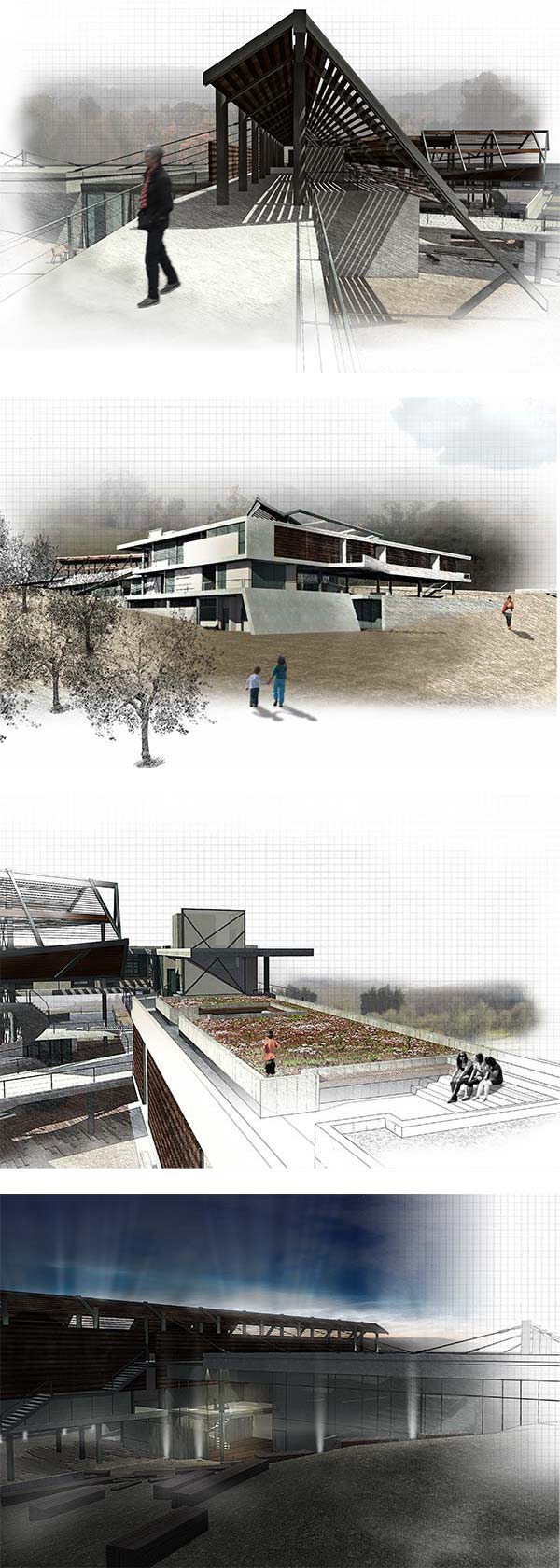

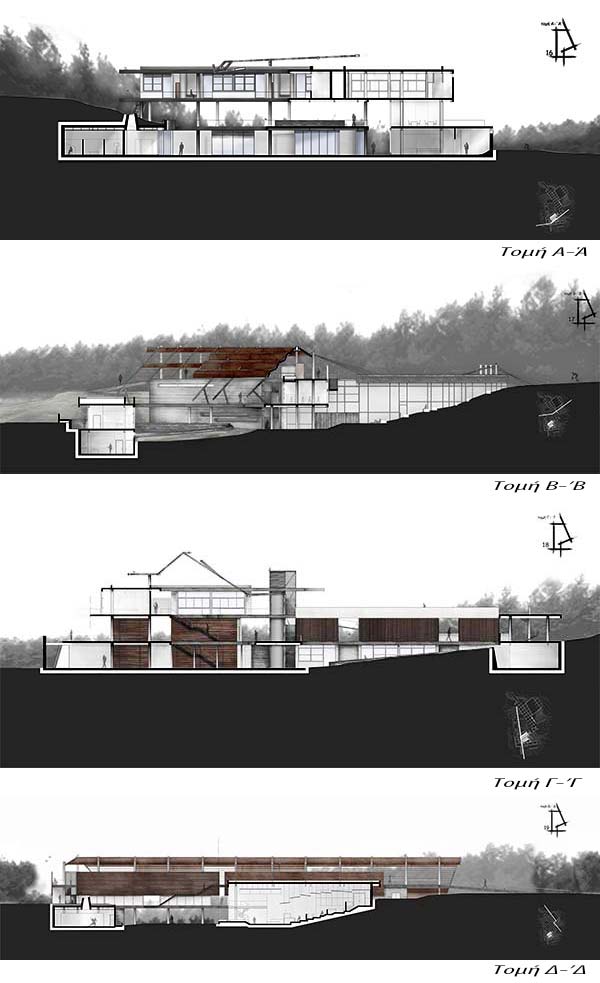
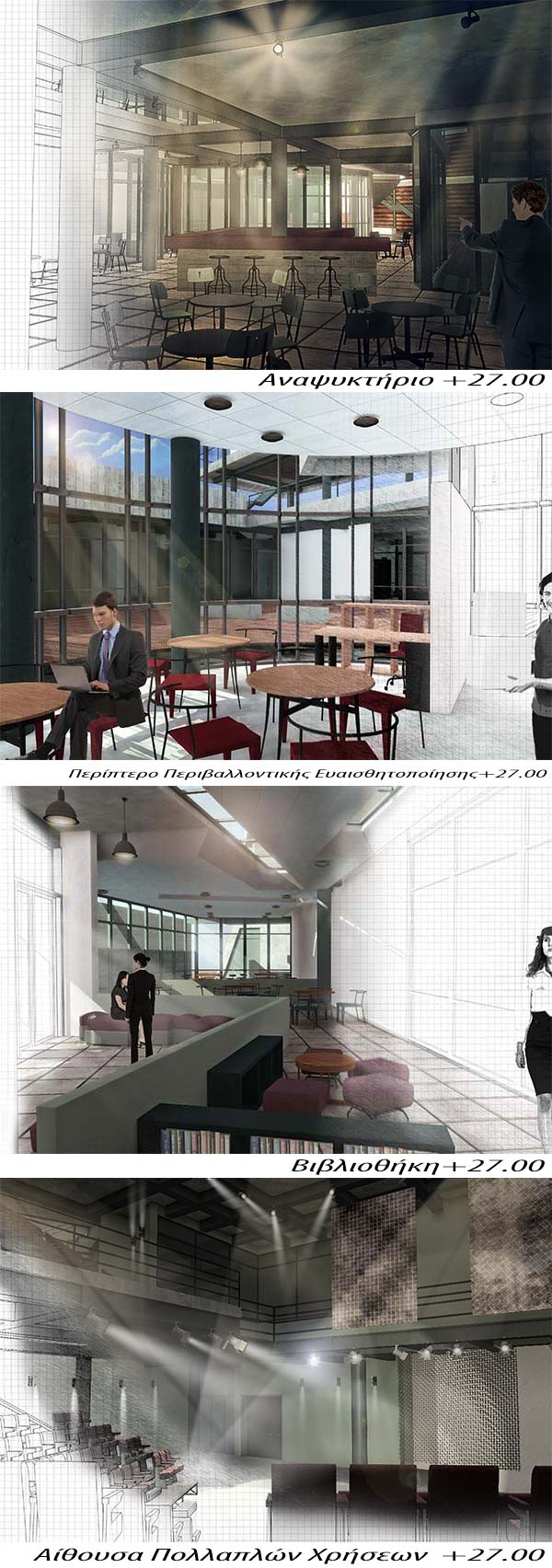


Related articles:
- DESTROY below the ACROPOLIS - VIDEO ( 13 November, 2007 )
- Architectural cannibalism in Athens ( 23 July, 2009 )
- The Acropolis Museum: An Unhappy Fit ( 08 June, 2010 )
- The New Acropolis Museum: A Triumph of Sophistry ( 21 September, 2009 )
- Αrchitectural competition ( 13 March, 2009 )
- D. Areopagitou 2008: reformation competition of the rear views of historic buildings towards the new Acropolis Museum ( 25 July, 2011 )
- New Acropolis museum ( 06 January, 2013 )
- All about fish ( 14 February, 2013 )
- New Acropolis Museum (NAM) ( 07 October, 2013 )
- The archaeological museum of Ancient Messene and the architectural configurations of the archaeological site ( 08 January, 2014 )
- Redefining Leftovers ( 05 April, 2014 )
- Theatre complex at Koukaki, Athens ( 20 January, 2014 )
- Reformation and rehabilitation of an inactive quarry, with spatial location of uses for Tourism, Recreation and Environmental Education ( 10 February, 2014 )
- Cultural center of Glyfada ( 23 February, 2014 )
- Environmental Center and Cultural Center in Kaiafa’s Lake ( 21 March, 2014 )
- The rack railway museum at Vouraikos gorge ( 18 April, 2014 )
- Museum of underwater antiquities in Chios ( 01 June, 2014 )
- Archaeological museum in Astypalaia ( 03 November, 2014 )
- Diploma projects exhibition museum of school of architecture ( 02 March, 2015 )
- Lighthouse Museum in Andros ( 20 April, 2015 )
- Archaeological Museum for the Neighbourhood of Plato’s Academy ( 15 April, 2015 )
- Palazzo di Lorenzo’s Museum in Sicily ( 15 May, 2015 )
- New Archaeological Museum of Delos ( 19 July, 2015 )
- Archaeological Museum of Eleftherna ( 01 September, 2015 )










